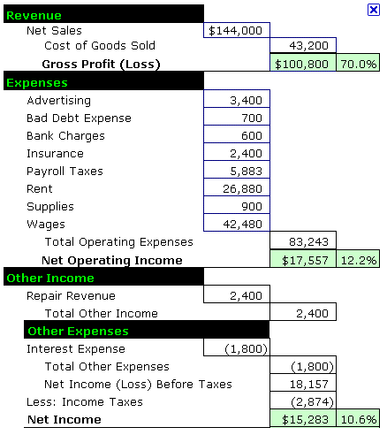How much can you make from eCommerce?
by Admin
Posted on 09-07-2023 08:07 PM

From negative reviews to word-of-mouth complaints, one bad interaction can cost you thousands. If you've ever had a poor customer service experience you'll know that it puts you off returning to a particular store or service provider.
 With that in mind, excellent customer service is non-negotiable for any ecommerce
business
that's serious about growth. But with so many tasks for an ecommerce business owner to juggle, how do you find time to provide excellent customer service at the same time as creating foolproof marketing strategies, and building relationships with suppliers?
the solution lies in customer service software. Think of the most common pain points of providing customer service.
With that in mind, excellent customer service is non-negotiable for any ecommerce
business
that's serious about growth. But with so many tasks for an ecommerce business owner to juggle, how do you find time to provide excellent customer service at the same time as creating foolproof marketing strategies, and building relationships with suppliers?
the solution lies in customer service software. Think of the most common pain points of providing customer service.
With the shift from a brick-and-mortar store to an online platform, besides being a compulsory choice for businesses to survive under the impact of covid-19, ecommerce is more than an option. With smartphones and easy access to e-commerce stores, shoppers now lean more towards ecommerce for their shopping needs. You name it, from groceries to gadgets to clothing, and you get several small and medium-sized ecommerce stores ready to serve your needs. In 2022, the total number of digital buyers in the united states alone was over 280 million. But how much can people earn from ecommerce? this article will give you some ideas and solutions to optimize the revenue.
How much you’ll pay yourself depends on the established norms in your industry. To give you an idea, the median wage for chief executives in the us is $179,520, according to the bureau of labor statistics. Of course, this figure is skewed due to a large number of overcompensated corporate ceos, but it gives you a general idea of how much a founder/ceo makes. However, when you look at ceo salaries by industry, you see that the figures differ a lot. For example, in the ecommerce industry, the average salary for a ceo in the us is $210,000 a year, while a hospital ceo makes $154,246 a year on average. That’s why it makes sense to research the average compensation in your industry. Ask your friends and acquaintances in the industry about their own compensation. Come up with something similar (as long as it doesn’t impact profitability).
With so many people losing their jobs through covid, many will inevitably investigate the possibility of setting up an online ecommerce business. Although it can be relatively easy to build an ecommerce business for relatively little cost, you will need to spend some time ensuring that your business is viable. There can be considerable competition online, and you need to establish a point of difference from everybody else. You generally can't expect to make much money in the early days of your business. It takes time to build a following and establish yourself online. However, assuming that there is a demand for the products you intend to sell (or services you will perform), then you should be able to build a client base in the end, as long as you have the patience and resilience to survive the initial lean times.
If you accept credit card payments at your ecommerce business, you may have a diverse set of customers that spans all 50 states. While that’s great for your profit margin, it creates a good deal of confusion when you’re trying to figure out how much sales tax to charge. The following guide will give you some information and tips that will remove some of the gray areas.
How much can a new eCommerce store make?
Dreaming about turning your million-dollar idea into an ecommerce store ? you may already be thinking about what type of products you want to sell, who your audience will be, and how you’ll attract shoppers. It’s a lot to consider, but don’t worry—to figure this out, let’s look at five basic areas to help set your ecommerce business up for success:
researching and validating your business idea so you know what’s likely to sell
procuring products or sourcing them from reliable suppliers
choosing selling channels to connect products with shoppers
setting up an online store and listing products
marketing and promoting products to raise sales.

Match your best selling products with less desirable, related products you want to move out of inventory. For example, if your online storefront sells fashion scarves three times better than your other items, exploit the popular item to grow ecommerce revenue across the board. Increase advertising on the popular scarves to get more people to the site. Add more scarves for a wider selection as well as high margin verticals, such as purses and jewelry. Create discounts and deals on the big sellers. Monitor how fast your strategies begin to move dead inventory and increase profitability, then tweak as needed.